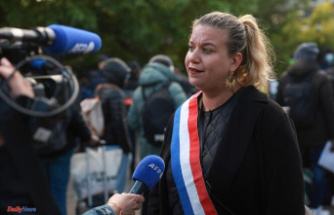Germany makes a proposal on how to reduce nitrate pollution in its fields - and receives the approval of the EU Commission. It stipulates that significantly less area may be intensively fertilized. More measuring stations are to monitor this in the future. Minister Özdemir wants to bring about a decision by the summer.
The long-standing dispute between Berlin and Brussels over the reduction of nitrate pollution in groundwater is moving: According to the Federal Ministry of Agriculture, the EU Commission approved a new proposal for the designation of polluted areas and called for a "very quick adoption". The federal government plans to bring the draft through the Bundesrat before the summer break. He hopes "very much for the support" of the countries, said Minister of Agriculture Cem Özdemir.
For years, the EU has been criticizing Germany for not adequately implementing the nitrate directive, which is designed to protect groundwater from excessive nitrate pollution. The European Court of Justice therefore condemned the Federal Republic in 2018 and demanded changes to the German fertilizer law.
The current fertilizer ordinance finally came into force after long negotiations in May 2020 - but important provisions therein only in January 2021. The focus is on the designation of so-called red areas, which are already heavily polluted and where farmers are therefore allowed to apply less fertilizer.
Finally, in June 2021, the EU complained that the provisions of the Fertilizer Ordinance were still not sufficient to comply with the nitrate values specified by the EU. As a result, the government submitted a new proposal to the EU Commission in February of this year to reduce nitrate pollution.
This now stipulates that 45 percent more areas belong to the "red areas" in which less fertilization is allowed. According to the Ministry of Agriculture, the area will increase from the current 2.0 million hectares to 2.9 million hectares. In addition, a network of measuring points is to be used for the designation of the areas in the future, which is to be “significantly” densified by 2024. A uniform statistical procedure is then to be developed by a transitional period of 2028.
"We have mastered an important stage, but have not quite reached our goal yet," said Özdemir, with a view to the necessary approval from the federal states. "We shouldn't overstrain our patience in the last few meters and come to an end quickly." German farmers "finally need a reliable framework".
The WWF made a similar statement. Under Özdemir, the ministry had achieved what his predecessor Julia Klöckner had failed to do - "finally put an end to the back and forth on the subject of fertilizers". With their approval in the Bundesrat, the states now have it in their hands as to whether farmers "finally get reliable prospects".












